Colored Effects (Indie Review)
November 26, 2023 Leave a comment
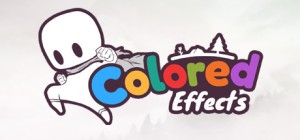 Colored Effects
Colored Effects
Platforms: Nintendo Switch, Steam
Developed by TacSou
Published by Flynn’s Arcade
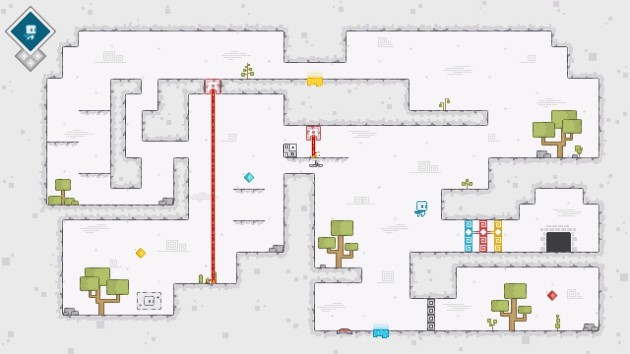
The graphics are nice, clean, and distinctive. TacSou never put the trees in locations that would be distracting. It’s a game that allows you to process everything quickly with no visual loudness.
I’ve had a bitch of a time trying to write this review for Colored Effects, an indie puzzler where you have to dip your character in superpower-granting paints in order to solve logic puzzles. I’ve not been struggling because Colored Effects is bad or boring or anything scandalous like that. Actually, it’s really good. I can’t stress enough how good the controls are. Colored Effects has accurate, intuitive movement physics, effortless jumping physics, and some of the best box-shoving mechanics I’ve seen (with one tiny but annoying exception, see the next caption). Seriously, I hope developer TacSou wrote down the recipe for this (I assume video games are made with recipes) because the controls are gosh darned perfect.
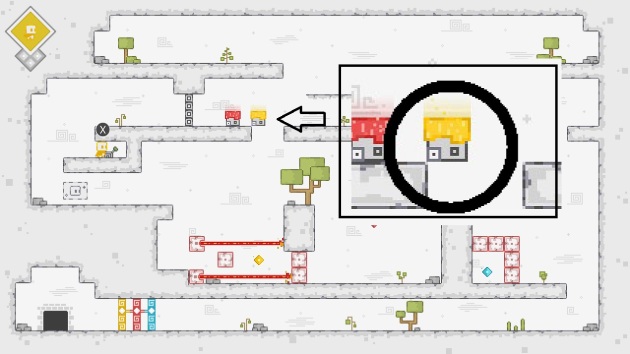
This is the one and only exception to the controls/movement being flawless. Here, a box I wanted to fall through a trapdoor when I activated a lever didn’t fall, instead defiantly balancing on a single pixel. Take that, Newton!
The color concept works great, and it’s largely because of those intuitive controls. You can only be one color at a time, and each color has unique special abilities. Green allows you to clone yourself and claim a carbon tax credit. Yellow gives you a dash move and grants you immunity from Green Lantern’s ring. Turning red lets you throw fireballs and gives you dictatorial authority over all other Power Rangers (unless it’s the Alien Rangers or Time Force squad, where you’re relegated to field command). Purple allows you to warp just far enough to pass through nearby walls and also will make televangelists speculate as to whether you’re supposed to be “the gay one” or not. Dipping yourself in blue gives you a double jump and also assures you’re a shoe-in to win California’s electoral votes. There’s almost no learning curve to any of the superpowers and their limitations. The clones of yourself are lifeless blocks that vanish if you leave the bubble surrounding them. The warping ability is the neatest, because when you’re choosing the direction to warp, the game doesn’t pause, so you can be hovering mid-air. Yes, this is worked into the level design, too! These are really basic platforming/puzzling tropes, but they’re used so cleverly.

There’s a few technical annoyances. There’s checkpoint billboards you can use. See the box with the little character below the two switches on the left of the picture? That’s it, and it’s 100% optional to activate. They’re much appreciated, but they also come with a monkey’s paw-like glitchy drawback. Sometimes I’d activate them only to realize I’d made the wrong move, so I’d pause the game and restart the whole level from scratch. Then I’d go about puzzling, realize I’d made another mistake and hit the quick restart button, which should start the whole level over, right? Only, it wouldn’t. The game would revert back to the previous checkpoint I’d already deliberately erased, which meant I had to pause the game and click the restart level option again. That happened constantly and it was so annoying.
And the puzzles are fun little test chambers that mostly accomplish what I call “The Big Overwhelm.” That’s my term for levels so big and vast and multifaceted that the first time you see the layout, you think “there’s no way I’ll ever make sense of it.” Which is awesome, by the way. The Big Overwhelm is the secret sauce that makes classic puzzlers Portal and Baba is You work. I dare say no logic puzzler can be great without it. Not every level of Colored Effects pulls it off. In general, any puzzle game can usually be sussed out by figuring out what the final move of a level is and reverse-engineering it from there. Well, quite a few stages in Colored Effects suffer from “First Move Syndrome” where a puzzle is too easy because the first move is so obvious that the rest of the design logic instantly reveals itself. Even late in the game this happens. Scaling is super hard to do in a puzzler. You can add extra steps or red herrings till the cows come home, but it’s just so hard to gauge what is going to throw someone off. Scratching your head is an entirely personal experience, and unless a developer is able to use something along the lines of focus testing to reorder levels based on average completion times, you’re going to end up with a difficulty curve that looks like the recordings of a seismograph. It’s kind of inevitable.
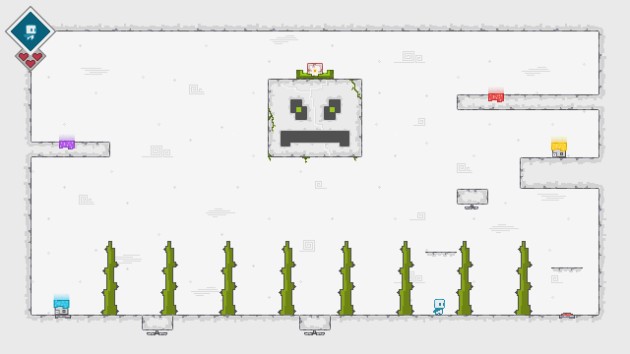
This was really the only boss I enjoyed fighting because it was the only one that felt like a PUZZLE in this PUZZLE GAME that ended when you solved the PUZZLE instead of having to redo certain steps because it’s a boss and bosses are supposed to have “hit points.” This boss requires you to actually stop and think. Good stuff.
TacSou’s concept was you’d earn new colors by fighting bosses. Solid idea if the boss battles are true to the rest of the game. But, only the one I pictured above accomplishes that, while the rest don’t feel right for this game at all. And the pacing is truly strange. Colored Effects has 40 levels. Which levels have the bosses? 2, 6, 10, 14, and 40. Yes, really! You go from three levels and a boss fight to a twenty-five level gap between them. And I’m not complaining, by the way, because the levels are fun and the bosses, well, aren’t. The final boss has roughly fifty-thousand goddamned different phases (but who’s counting?) and goes on FOREVER because each color has its own segment, and it never feels puzzley. Not for a single second. Mind you, there are no enemies in the puzzle stages, yet you have to fight airplanes shooting bullet hell-ish projectiles at you to finish the game, and it’s so out of place. None of the bosses are bad in the traditional sense. It’s only by virtue of how wrong they are for Colored Effects that they’re unwelcome speed bumps, with that one exception above. And that one exception is why I can’t overlook this, because TacSou proved they COULD make bosses that combined genuine logic puzzle goodness with traditional game bosses. The rest are so cookie cutter they feel like any generic platformer’s bosses. Shame, because this is NOT a generic game!
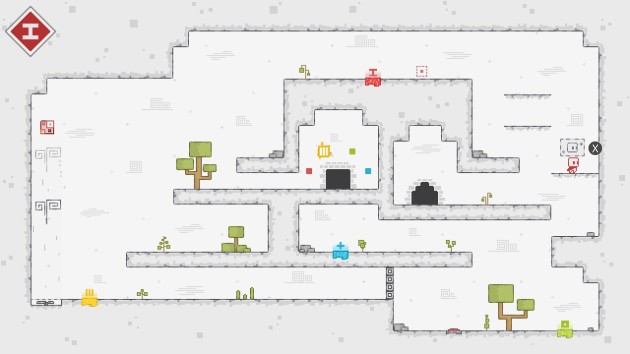
In the first few levels, you have to collect gems that open gates to the room exit. Then, Colored Effects adds a twist. Some of the levels require you to reach the exit once with each color available, at which point you come out the starting door and have to do it again as a different color. Once you’ve gone through the door in a color, it’s checked off, but you can’t go through the exit as that color again. It works and it’s unique, but these also tended to be the puzzles that were easiest because either the first move or the last move you’d make became too obvious. Oh, and if you’re curious what color blind mode looks like, here it is.
 80% of the bosses being lame aside, Colored Effects is a very good puzzler. I really don’t have too many notes on the puzzle logic itself, because movement and the box shoving physics are so accurate that you don’t even stress them. There’s no pixel-perfect jumping required. I can only think of one single level where I felt the timing of activating switches and special moves at the correct moments was so precise that novice gamers might struggle with performing it even if they figure out the solution. No, this is actually nearly perfect as far as this genre goes because the movement/timing is so fine tuned that it really becomes your wits versus the puzzle design, and the controller isn’t a factor at all. And they’re really good puzzles too. You don’t have to be a brain surgeon to enjoy Colored Effects. In many ways, it’s the ideal Nintendo Switch puzzler. The toughest part of Colored Effects for me was writing this review, really. What can I say? It’s hard to write about a game that does so little wrong.
80% of the bosses being lame aside, Colored Effects is a very good puzzler. I really don’t have too many notes on the puzzle logic itself, because movement and the box shoving physics are so accurate that you don’t even stress them. There’s no pixel-perfect jumping required. I can only think of one single level where I felt the timing of activating switches and special moves at the correct moments was so precise that novice gamers might struggle with performing it even if they figure out the solution. No, this is actually nearly perfect as far as this genre goes because the movement/timing is so fine tuned that it really becomes your wits versus the puzzle design, and the controller isn’t a factor at all. And they’re really good puzzles too. You don’t have to be a brain surgeon to enjoy Colored Effects. In many ways, it’s the ideal Nintendo Switch puzzler. The toughest part of Colored Effects for me was writing this review, really. What can I say? It’s hard to write about a game that does so little wrong.
Verdict: YES!
Colored Effects is Chick-Approved and ranked on the Indie Gamer Chick Leaderboard.
$3.99 (Normally $4.99) were dipped in brown paint and rolled in bread crumbs in the making of this review.
A Review Copy of Colored Effects was supplied by Flynn’s Arcade. Upon release, a copy of it was purchased by a member of the Vice Family. Two, in fact! I bought my nephew one, too. Hopefully he can put down Fortnite long enough to try it.

You must be logged in to post a comment.